Twists & turns: Noodle making at Mr Chow
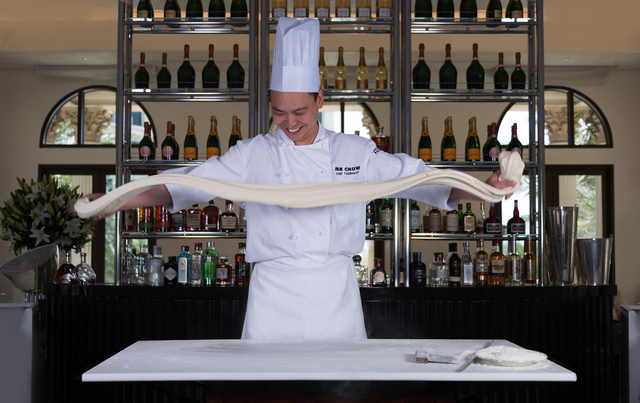
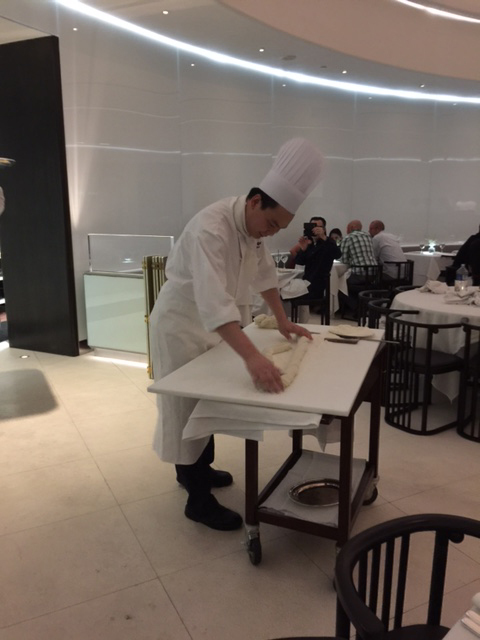
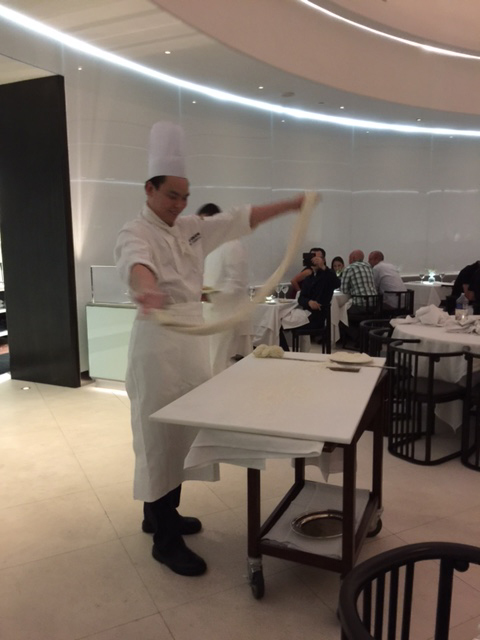
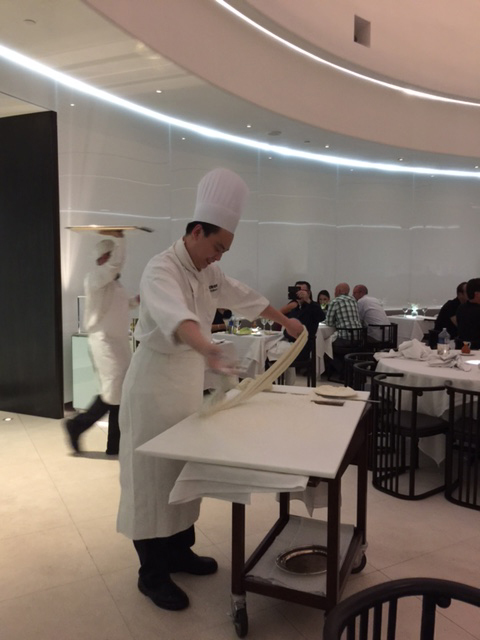

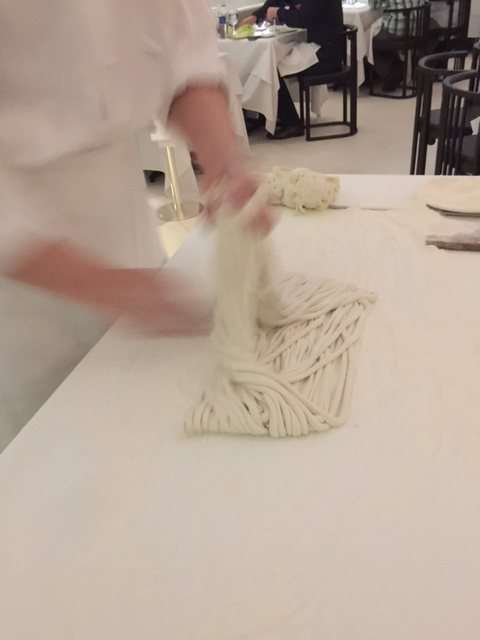

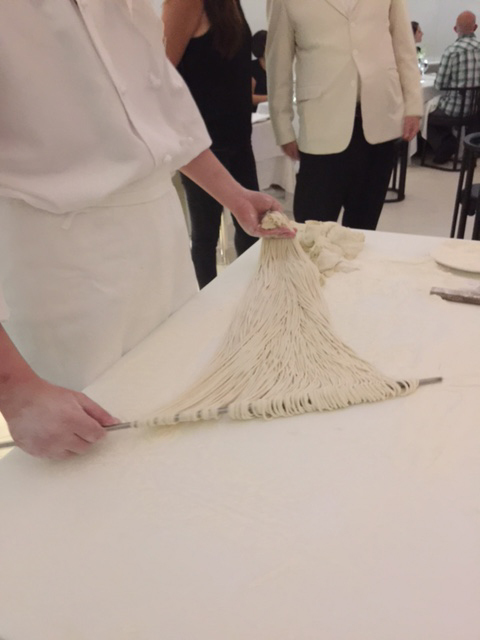
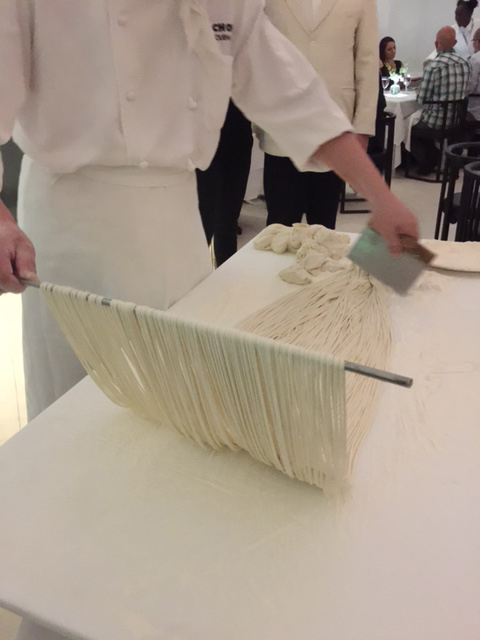
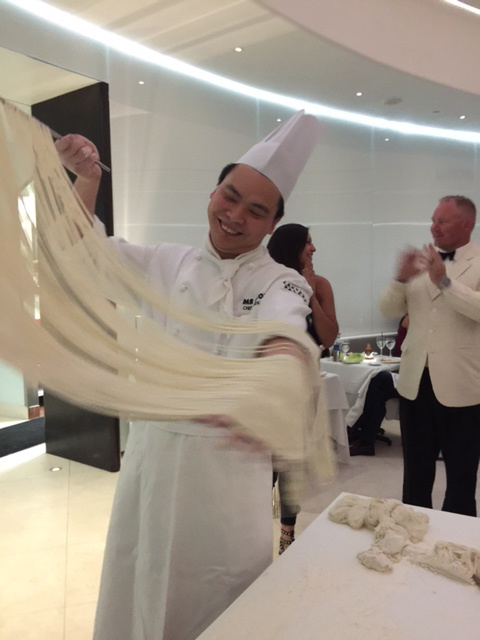
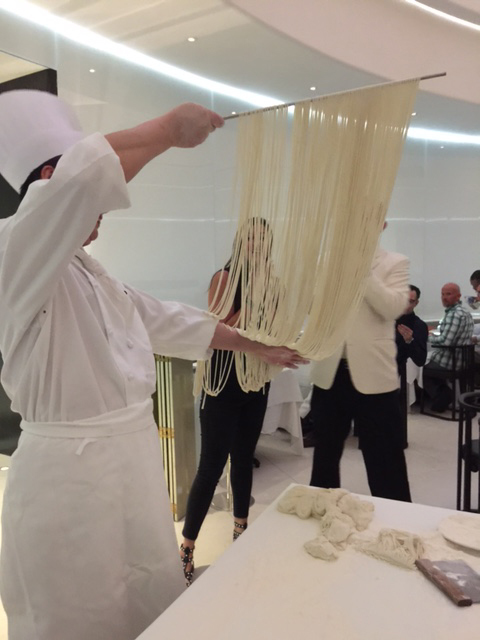


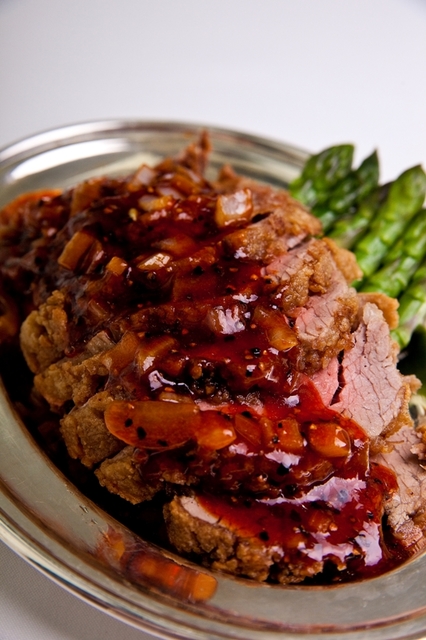

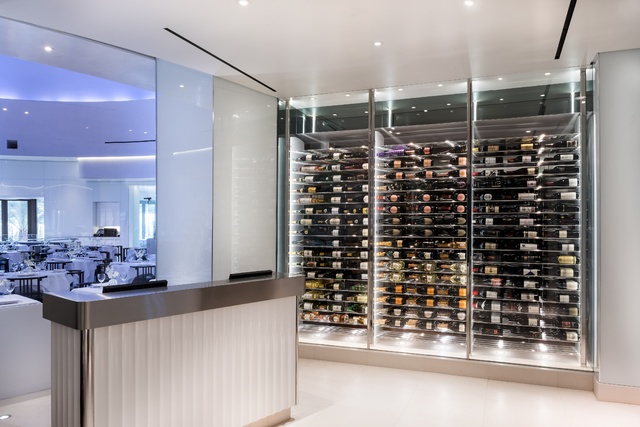
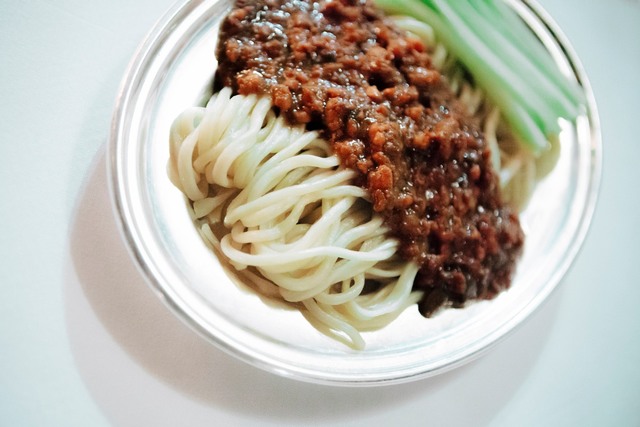
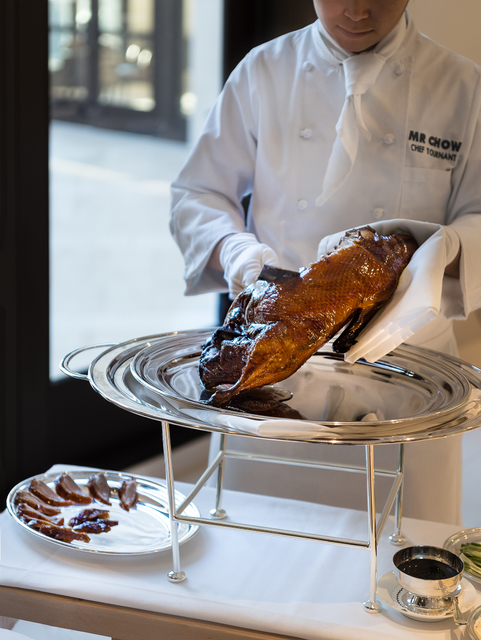
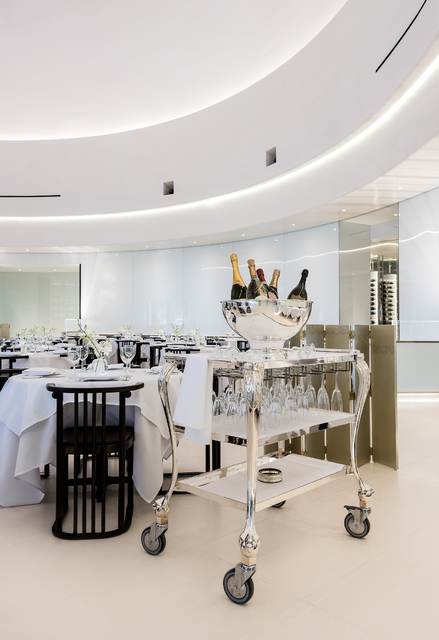
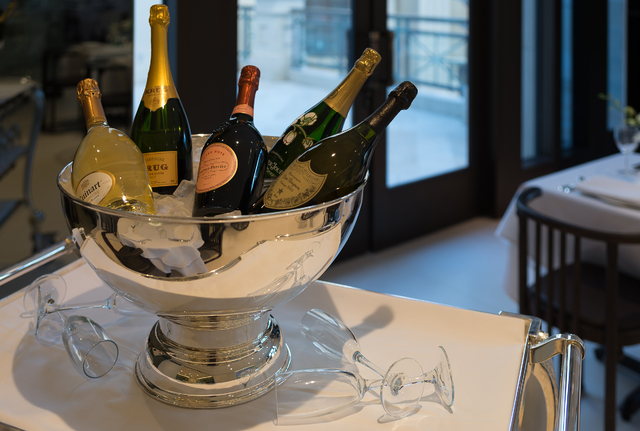


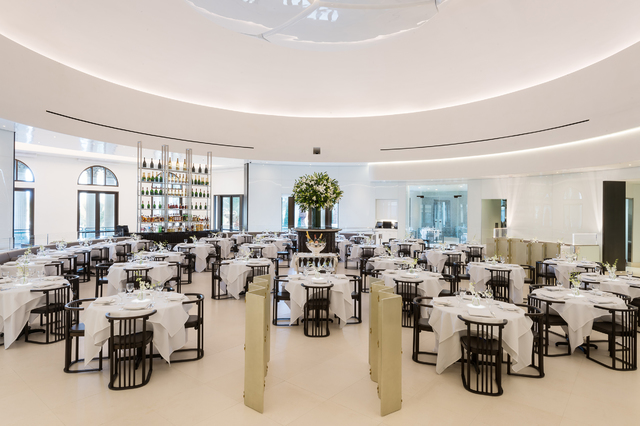

It’s an amazing production worthy of Criss Angel, but this is not magic. Albeit magical, this is reality. A highly skilled Chinese pasta chef takes a 1-pound bag of flour, adds 1 pound of water, throws in pinches of salt and five minutes later turns it into 128 strands of noodles..
Training and experimentation to succeed with this endeavor takes 10 months and more. The spectacle takes place nightly as culinary theater at Mr Chow in Caesars Palace, and it brings diners to a halt in amazement.
It has to be seen to be believed. The exact recipe will remain a secret because it belongs only to the chefs who can mastermind this David Copperfield-type trick. They crown the act wielding a cleaver that slams down on the wooden trolley simultaneously to shred one very long noodle into 128 strands hanging from a bamboo fork.
Mr Chow General Manager Patrice Rozat told me as I watched: “The consistency of the dough needs to be perfect for stretching of the noodles. So the most important thing is not just a mix of the water, salt and flour, it’s also to get the right consistency of the dough. To achieve that, the gluten in the flour needs to be stretched when the pasta chef beats the dough onto the table.
“The purpose of that is to stretch the gluten, to make the gluten more malleable. At the end, the consistency of the dough is strong enough, but not too heavy in water. If you put in too much water, it’s going to fall apart. If you put in too much flour, it’ll just break up.”
I asked Patrice how many chefs can pull off high-flying noodles: “It is difficult for us to find good pasta chefs to accomplish this art as it’s been passed on in China for hundreds and thousands of years from father to son. A good pasta chef doesn’t just know how to make noodles. He also knows how to make dough for dim sum and pot stickers.
“Once he’s learned the art, he becomes professional and does it right nearly all the time. When he comes out to do the show, he’s ready, and he does it right all the time. But at the beginning, it goes wrong every time. It takes quite a while to get it right every time.
“We have one pasta chef here right now, and we’ve been training her for over 10 months, and she’s still training. … When she thinks she’s ready, she will show us that she can make it, and at that point, she is not only perfect but perfect every time. That means not breaking one string.”
Before the chef cuts the noodle ends to make 128 strands, the entire length of the one piece measures more than 100 feet minimum. “It depends on how many twists and turns he takes,” Patrice continued.
“The amount and thickness of the noodles is decided by the amount of time he turns and pulls the noodles. As he turns, it always doubles. First you have one noodle, then two, four, eight, 16, 32, 64 and 128, which is usually the magic number where they stop because it’s a perfect size.
“He always has to start with the same amount of dough in order to get the same amount of noodles of the same thickness every time. It has to be very consistent because after that, you cook them, and the cooking time is always the same, too.
“I’ve never seen somebody mess up in the front with our customers watching. I think they believe they dare not make an error. Every time they come out, we’re always with them, we’re part of a team here, and they’re part of a team. We cheer them on.”
Owner Michael Chow introduced the art of showing noodle making on Valentine’s Day in 1968 when he opened his first restaurant in London. He placed it front and center because he wanted to spread the knowledge about Chinese food culture, its art and necessary skill level.
Patrice summed up: “It is incredibly entertaining. Our staff and diners come to a halt when the pasta chef starts the theater. I usually go around after the show to at least one or two tables and say, ‘If you can tell me how many noodles he made, dinner’s on me.’ ”
“Now I won’t be able to do that anymore because you’ve just told them. Maybe I’ll make him do 256 in the future.”












